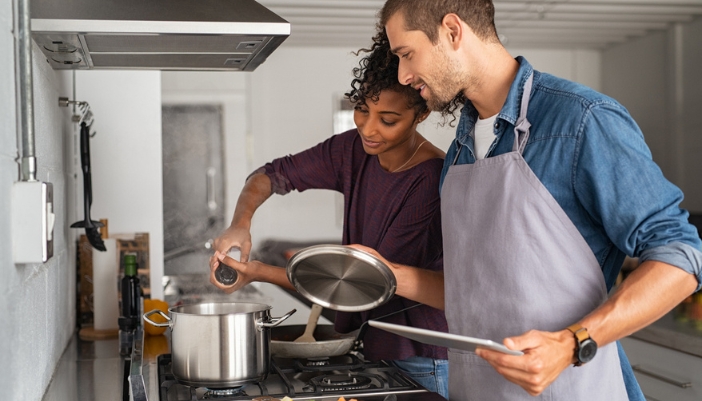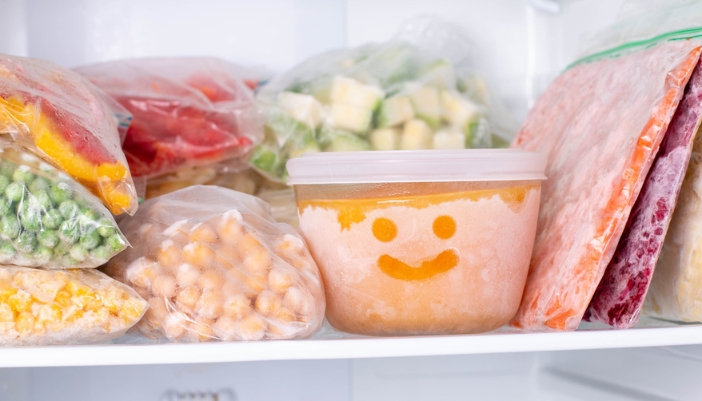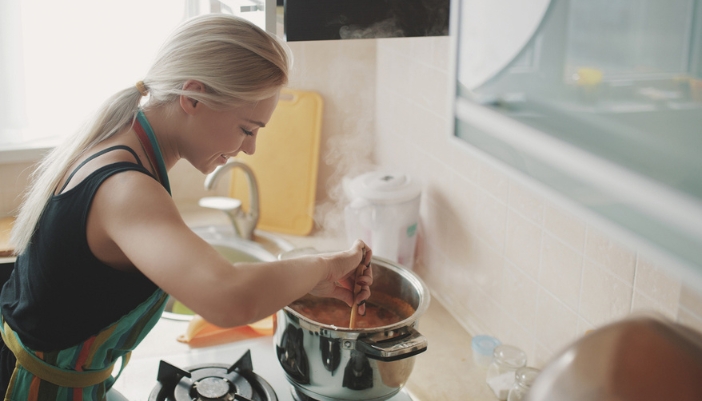There’s nothing like a cozy bowl of soup to warm you up, especially during National Soup Month! But here’s a scenario you might recognize: you pull a container of soup from the freezer, only to find it covered in icy crystals. Or worse, you try to microwave it, and it comes out scorching on the edges and stone-cold in the middle. Frustrating, right?
It doesn’t have to be this way. With a few simple techniques, you can keep your homemade soups tasting as fresh and delicious as the day they were made. Our experts at Felton Appliances are here to share the secrets to freezing and reheating soup the right way, so every bowl is a winner!

Mastering Soup Storage: Get It Right from the Start
Soup lovers, we’ve all been there—dreaming of a warm bowl on a chilly night, only to discover freezer mishaps have ruined our plans. Luckily, freezing soup the right way is simple when you know the tricks!
- Cool it down first. Don’t toss piping-hot soup straight into the freezer. Not only can it mess with your freezer’s temperature, but it could also lead to uneven freezing. Let the soup cool completely before packing it up—placing the pot in an ice water bath can speed this up.
- Pick the right containers. Use freezer-safe options like glass jars, sturdy plastic containers, or resealable freezer bags. Want quick reheats later? Divide the soup into individual portions. Always leave a little space at the top—frozen soup expands, and a busted lid is no fun.
- Label everything. No more guessing games with freezer mystery meals! Write the type of soup and the date on the container. Most soups are best enjoyed within three months, so keeping track helps you stay organized and enjoy them at their peak.

The Freezing Formula for Fresh Soup
Your freezer is like a time capsule for soup—if you set it up right. Here’s how to ensure your soup stays fresh, tasty, and freezer-burn-free.
- Set your freezer temperature. Your freezer should be at or below 0°F (-18°C) to keep food safe and maintain quality. Don’t remember the last time you checked? Use a freezer thermometer to confirm, and adjust the settings if needed.
- Freeze it fast. Lay resealable freezer bags flat on a baking sheet to create thin, stackable layers. Flat freezing speeds up the freezing process and saves precious freezer space. For containers, leave some airflow around them until the soup is frozen solid, then stack them neatly.
- Avoid freezer overload. Stuffing your freezer to the brim might sound efficient, but it actually slows down freezing. Leave some room for air circulation so your soup freezes quickly and evenly.

Reheating Without Regret: Microwave Tips That Work
Reheating soup in the microwave sounds easy—until you end up with boiling edges and an icy center. Let’s fix that! With these simple tips, your soup will be evenly heated and perfectly delicious every time.
- Thaw before reheating. If you’ve got the time, thaw your soup in the fridge overnight. For a quicker option, use your microwave’s defrost setting to soften it before fully reheating. Starting from frozen can lead to uneven heating.
- Use the proper microwave settings. Heat the soup in a microwave-safe bowl at medium power (50-70%) to prevent hot spots. Stir every 30-60 seconds for even warmth, and keep going until it’s steamy all the way through.
- Check the temperature. For safe eating, your soup should reach 165°F (74°C). If you don’t have a thermometer, ensure it’s bubbling gently and piping hot throughout.
Pro Tip:
To avoid splatters, cover your soup loosely with a microwave-safe lid or plate. Less cleanup means more time to enjoy your meal!

Soup Hacks That’ll Change Your Freezer Game
If you’re a soup enthusiast (and who isn’t?), these extra tips will help you make the most of every batch—whether it’s headed for the freezer or straight to your table.
- Choose freezer-friendly soups. Broth-based soups, vegetable soups, and chili freeze beautifully. Cream-based or dairy-heavy soups? Not so much—they tend to separate or get grainy. If your favorite recipe has cream, add it fresh after reheating.
- Skip the pasta (for now). Noodles don’t hold up well in the freezer; they’ll turn to mush when reheated. Freeze the soup without the pasta, and cook fresh noodles to add when it’s time to eat.
- Get creative with leftovers. Reheated soup doesn’t have to stay in the bowl. Use it as a base for casseroles, stews, or even sauces to keep your meals exciting.
Pro Tip:
Love thick soups like split pea or chowder? Freeze them in small portions, then use them as a savory filling for pot pies or baked potatoes.
Seal the Deal on Perfect Soup
National Soup Month is the perfect excuse to whip up your favorite recipes, but your soup deserves better than freezer fails and microwave mishaps. By following a few easy steps, you can keep every spoonful just as satisfying as it was on day one. And if you’re ready to upgrade your kitchen tools for freezing and reheating or have any questions about your appliances, stop by Felton Appliances! Our experts are here to help you find exactly what you need and answer all your questions.